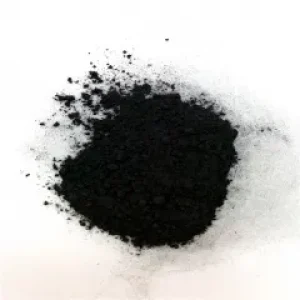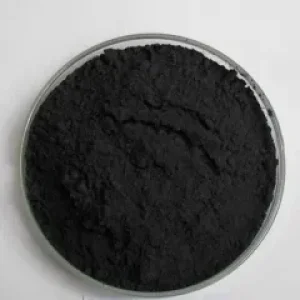Boron carbide (B4C) is a super-hard material recognized for its exceptional hardness, low density, and excellent neutron absorption capabilities. It is widely used in various industries where its unique combination of properties is highly beneficial. Here are some key parameters for boron carbide:
- Chemical Formula: B4C
- Molecular Weight: Approximately 55.25 g/mol
- Crystal Structure: Boron carbide has a complex crystal structure, often described as a rhombohedral lattice with a mixture of boron icosahedra and chains or layers.
- Density: Theoretical density ranges from 2.50 to 2.52 g/cm³, which is notably low compared to many other hard materials.
- Melting Point: Its melting point is extremely high, around 2700°C, making it suitable for high-temperature applications.
- Hardness: Boron carbide is one of the hardest materials known, with a Vickers hardness ranging from 35 to 40 GPa (or up to 3000 HV in some reports), surpassed only by diamond and cubic boron nitride.
- Thermal Conductivity: It exhibits good thermal conductivity, typically in the range of 40 to 200 W/(m·K), depending on the purity and microstructure.
- Thermal Expansion Coefficient: Boron carbide has a relatively low thermal expansion coefficient, approximately 4.5 × 10^-6 /°C, which contributes to its thermal shock resistance.
- Chemical Stability: It is chemically inert to most acids and alkalis, except for hydrofluoric acid and hot concentrated alkali metals.
- Neutron Absorption: Boron carbide is an excellent neutron absorber due to its high content of boron-10 isotope, which makes it useful in nuclear reactors and radiation shielding applications.
- Fracture Toughness: Despite its hardness, boron carbide’s fracture toughness is relatively low, typically in the range of 2 to 4 MPa·m^1/2, which can limit its use in certain load-bearing applications.
- Synthesis: Boron carbide is commonly synthesized through a carbothermal reduction process of boron oxide (B2O3) with carbon at high temperatures, often exceeding 2000°C.
-
Applications: Boron carbide finds use in body armor, bulletproof vests, abrasive powders, nozzles for high-temperature furnaces, neutron absorbers in nuclear reactors, and as a wear-resistant material in industrial machinery.

